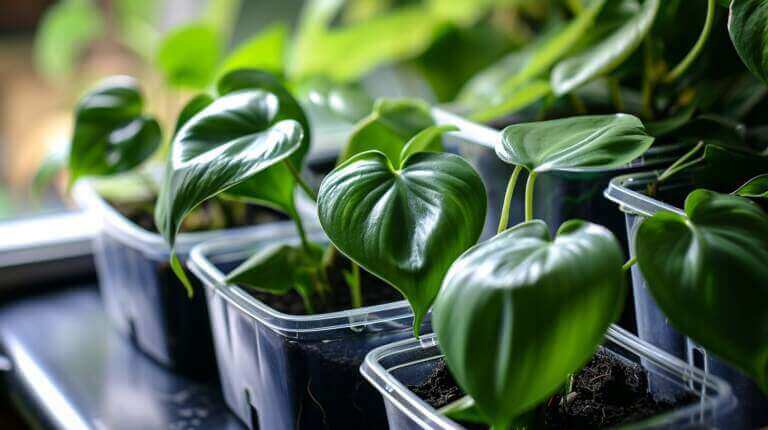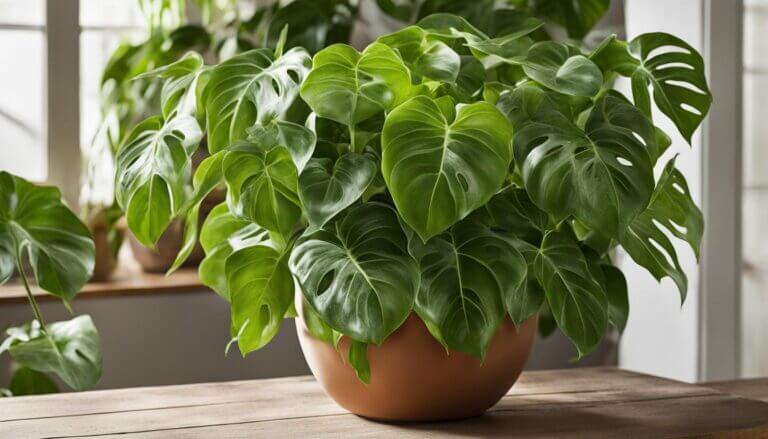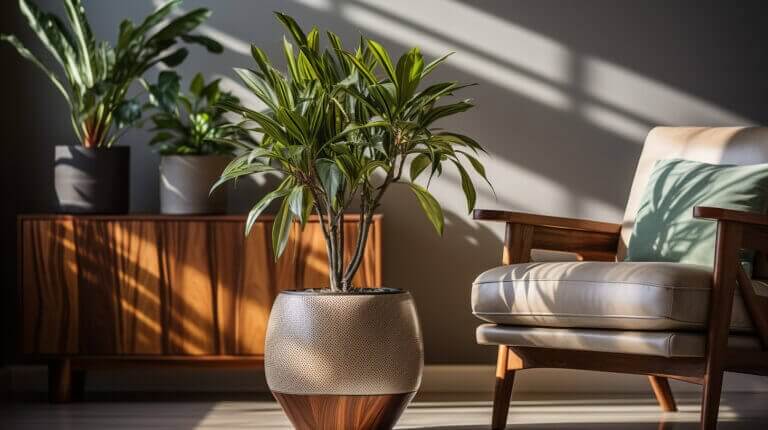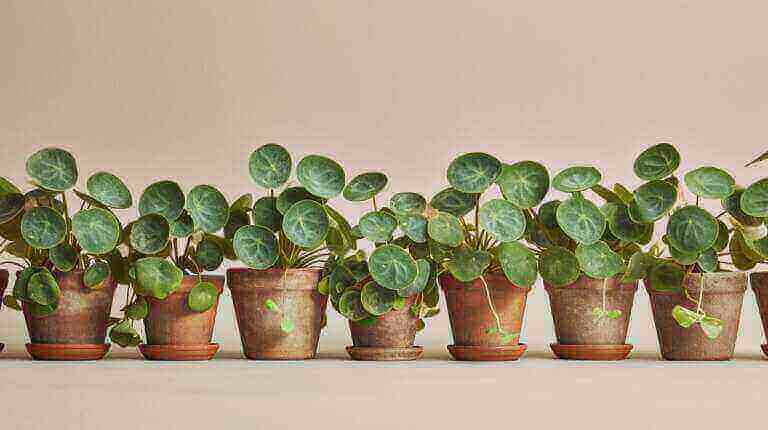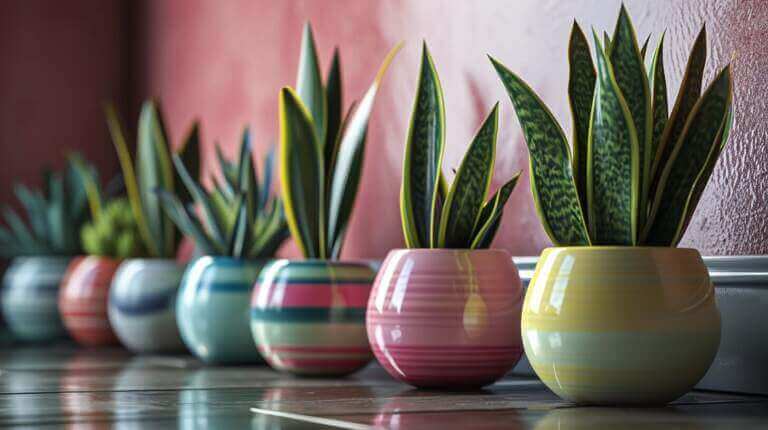Why Is Your Pilea Peperomioides(Chinese Money Plant) Houseplant Dropping Leaves? Fixes For Leaf Loss
If you notice your Pilea Peperomioides, also known as the Chinese money plant, dropping leaves, there can be several reasons for this leaf loss. Understanding the causes and implementing the appropriate solutions can help restore the health of your Pilea. Overwatering, moving the plant to a different spot, plant stress, low humidity, nutrient deficiency, improper light levels, and root-bound conditions are some common factors that can lead to leaf drop in Pilea. Addressing these issues can prevent further leaf loss and promote new growth.
Key Takeaways:
- Overwatering is a common cause of Pilea leaf drop. Ensure proper watering by checking the top inch of soil before watering.
- Environmental factors such as temperature, light, and humidity can contribute to leaf loss. Maintain consistent conditions for your Pilea.
- Nutritional deficiencies can cause leaves to become lighter in color before falling off. Use a balanced liquid fertilizer once a month.
- Pests like mealy bugs, spider mites, and aphids can infest Pilea and lead to leaf drop. Check for signs of pests and apply natural insecticides if necessary.
- Regular care and attention to these factors can help prevent leaf drop and promote healthy growth in your Pilea peperomioides.
Overwatering Pilea Plant Cause Leaf Drop
One of the common reasons for Pilea leaf drop is overwatering. Contrary to popular belief, drooping leaves are usually a sign of overwatering, not underwatering. Pilea plants prefer to be watered when the top inch of soil feels dry to the touch. Giving the plant excessive water can lead to root rot and result in leaves falling off.
To prevent overwatering, it is important to use lukewarm water while watering your Pilea. Additionally, it is advisable to check the roots for any signs of damage or rot. If overwatering is detected, the plant should be moved to a shady spot to prevent further stress on the roots. In severe cases, it may be necessary to remove the damaged roots and repot the plant in fresh, well-draining soil.
| Signs of Overwatering | Prevention | Treatment |
|---|---|---|
| Yellowing or browning leaves | Allow the top inch of soil to dry out before watering | Move the plant to a shadier spot, remove damaged roots, repot if necessary |
| Drooping or wilting foliage | Avoid waterlogged soil by using well-draining pots and soil mix | Water the plant less frequently and in smaller amounts |
| Musty or foul odor from the soil | Avoid overwatering and ensure proper air circulation | Allow the soil to dry out completely and repot if necessary |
Additional Tips to Prevent Overwatering:
- Use pots with drainage holes to ensure excess water can escape.
- Avoid letting water sit in saucers or trays beneath the pot.
- Water the Pilea thoroughly but allow the soil to dry out between waterings.
- Monitor the moisture level of the soil by inserting your finger into the top inch of soil.
- Consider using a moisture meter to accurately gauge the watering needs of your Pilea.
Environmental Factors Affecting Chinese Money Houseplant
When it comes to understanding why your Pilea Peperomioides is dropping leaves, it’s essential to consider the environmental factors that can contribute to leaf loss. Whether you’ve recently moved your Pilea or if it’s experiencing changes in temperature, lack of sunlight, low humidity, stress, or shock, these factors can all play a role in causing the plant to shed leaves.
One of the main environmental factors that can lead to leaf drop is moving your Pilea to a different spot. Sudden changes in light exposure and temperature can cause stress for the plant, resulting in leaf loss. If you need to relocate your Pilea, it’s important to gradually transition it to the new location, giving it time to adjust to the new environmental conditions.
Table: Environmental Factors and Pilea Leaf Drop
| Factors | Impact on Pilea |
|---|---|
| Changes in temperature | Stress and leaf loss |
| Lack of sunlight | Reduced photosynthesis and leaf drop |
| Low humidity | Dehydrated leaves and leaf loss |
| Stress or shock | Leaf drop as a response to unfavorable conditions |
| Repotting | Temporary stress and leaf loss during the transition |
Additionally, repotting or propagating your Pilea can induce stress and lead to leaf drop. When repotting, ensure that the new pot has proper drainage and use a well-draining soil mix. Taking care to maintain consistent light, temperature, and humidity levels can help mitigate the environmental factors that contribute to leaf drop in Pilea.
Nutritional Deficiencies and Chinese Money Plant Leaves Drop
Nutritional deficiencies can have a significant impact on the health of your Pilea Peperomioides, leading to leaf drop and overall decline in the plant’s vitality. To ensure that your Pilea is getting the necessary nutrients for healthy foliage growth, it is important to understand the signs of nutrient deficiency and implement proper fertilization.
One of the common indicators of nutrient deficiency is a change in leaf color. If you notice that the leaves of your Pilea are becoming lighter or developing yellow spots, it could be a sign that the plant lacks essential nutrients. Fertilizing your Pilea with a balanced liquid fertilizer can provide the necessary nutrients it needs to thrive.
When choosing a fertilizer, opt for an all-purpose liquid fertilizer that contains a balanced ratio of nitrogen, phosphorus, and potassium. It’s recommended to dilute the fertilizer to half strength to avoid overfertilization, which can also cause leaf drop. Apply the fertilizer once a month during the growing season to promote healthy foliage growth and vibrant leaf color.
| Nutrients | Importance | Sources |
|---|---|---|
| Nitrogen (N) | Essential for leaf growth and overall plant development | Compost, fish emulsion, blood meal |
| Phosphorus (P) | Crucial for root development and flower production | Bone meal, rock phosphate |
| Potassium (K) | Aids in overall plant health, disease resistance, and stress tolerance | Wood ash, potassium sulfate |
Identifying Nutrient Deficiencies
If you notice specific symptoms such as yellowing leaves, stunted growth, or leaf discoloration, it can help to identify which specific nutrient is lacking. This can guide you in selecting the appropriate fertilizer or supplement to address the deficiency. However, it’s important to note that multiple nutrient deficiencies can present similar symptoms, so it’s recommended to follow a balanced fertilization approach to cover all bases.
Pest Infestation and Pilea Leaf Drop
Pests can be a major cause of leaf drop in Pilea plants. Common culprits include mealy bugs, spider mites, and aphids. These pesky insects can infest your beloved Pilea and wreak havoc on its foliage. It’s crucial to regularly inspect your plant for any signs of pest infestation.
When checking for pests, be sure to examine both the soil and the undersides of the leaves. Look out for tiny insects, webbing, or sticky residue, as these are clear indications of an infestation. If you spot any bugs, it’s important to take immediate action to protect your plant.
Manual removal of the pests is the first step. Gently wiping the leaves with a damp cloth can help get rid of visible bugs. For more stubborn infestations, you may need to resort to natural insecticides such as diatomaceous earth or neem oil. These organic solutions can effectively control the pests without harming your plant.
FAQ
Why is my Pilea Peperomioides dropping leaves?
There can be several reasons for leaf loss in Pilea, such as overwatering, environmental factors, nutritional deficiencies, and pest infestation. Understanding these causes and implementing appropriate solutions can help restore the health of your plant.
Can overwatering cause Pilea leaf drop?
Yes, overwatering is a common issue that can lead to leaf drop in Pilea. Contrary to popular belief, drooping leaves are usually a sign of overwatering, not underwatering. It is important to water Pilea when the top inch of soil feels dry and to avoid excessive water, which can cause root rot and leaf loss.
How do environmental factors affect Pilea leaf drop?
Environmental factors such as moving the plant, fluctuations in temperature, light, and moisture, low humidity levels, and plant stress or shock can contribute to leaf drop. It is important to gradually transition the plant when moving it and to maintain consistent light, temperature, and humidity levels to prevent environmental-related leaf loss.
Can nutritional deficiencies cause Pilea leaf drop?
Yes, if the plant is not receiving adequate nutrients, leaves may become lighter in color before turning yellow and falling off. Using a liquid fertilizer with balanced nutrients once a month can help provide the necessary nutrients for healthy foliage growth and prevent nutrient deficiencies.
Can pest infestation lead to Pilea leaf drop?
Yes, pests such as mealy bugs, spider mites, and aphids can infest Pilea and cause leaf drop. It is important to inspect the plant for signs of pests, remove them manually, and apply organic natural insecticides to control the infestation. Checking other neighboring plants for pest infestation is also advisable.


